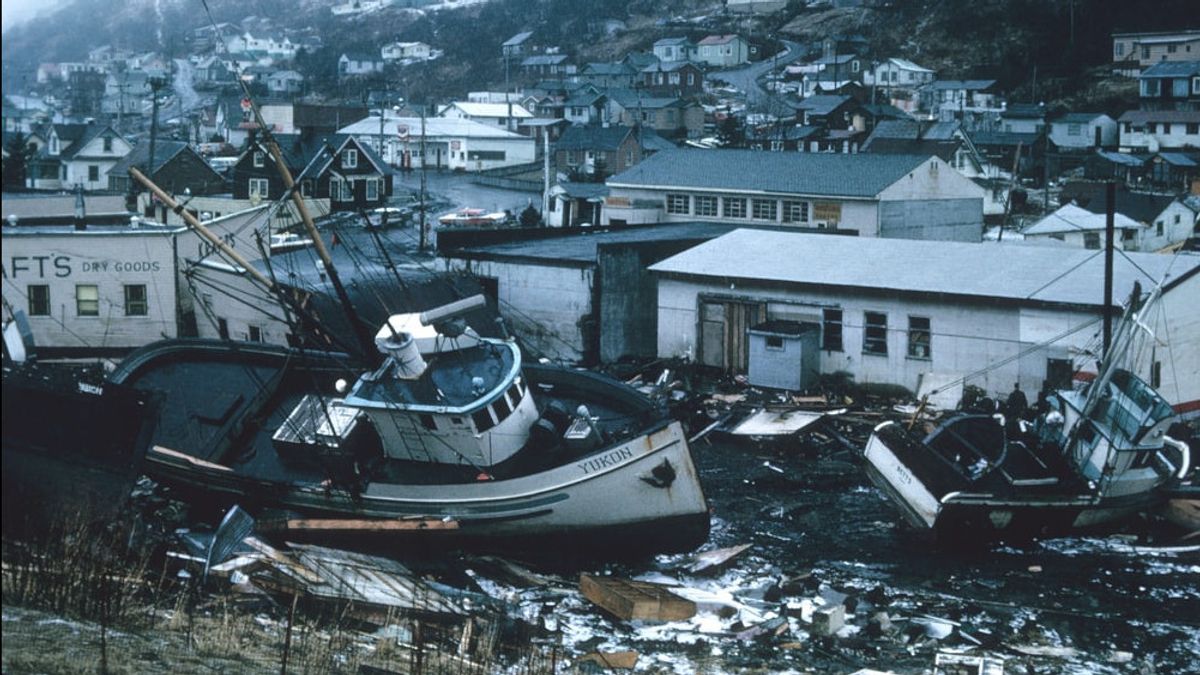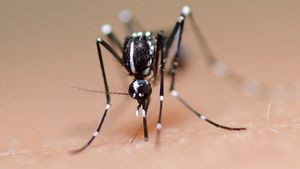JAKARTA - Several areas in the south of Java Island have the potential to experience natural disasters in the form of a large tsunami with a height of more than 3 meters.
This information is based on the National Tsunami Hazard Assessment document in Indonesia supported by the National Disaster Management Agency (BNPB) and the Australian Agency for International Development (AusAID) through the Australia Indonesia Facility for Disaster Reduction (AIFDR).
The southern region of Java Island with the potential for a large tsunami
According to the document seen by VOI from the official website of the Ministry of Energy and Mineral Resources (ESDM) Thursday, March 18, 2021, tsunami maps are made based on a probability tsunami hazard assessment methodology that allows estimating the height of a tsunami from various possibilities that occur.
From these documents, there are at least 10 areas in the South of Java Island that have the potential to experience a large tsunami, including:
1. Garut Regency, West Java
2. Cianjur Regency, West Java
3. Ciamis Regency, West Java
4. Purworejo Regency, Central Java
5. City of Tasikmalaya, West Java
6. Wonogiri Regency, Central Java
7. Blitar Regency, East Java
8. Pandeglang Regency, Banten
9. City of Sukabumi, West Java
10. Kebumen Regency, West Java
Apart from the 10 regions above, other areas that have the potential for large tsunamis with a height of more than 3 meters every one year according to the Tsunami Hazard Assessment document in Indonesia are West Lampung, Mentawai Islands, and Nias.
This is followed by the southern coast of Java, the southwest coast of Sumatra and parts of Bali and West Nusa Tenggara with a probability of 2-10 percent.
Areas with a low tsunami potentialMeanwhile, the areas that have the potential to experience minor tsunamis are the northern coast of Java, the east coast of Sumatra, and the West and South Coasts of Kalimantan, as well as the southern coast of Papua.
The area that is predicted to experience the largest tsunamiThe findings presented in the document also state that the west coast of Sumatra, the southern coast of Java and West and East Nusa Tenggara have the greatest potential for tsunami hazard in Indonesia.
However, parts of eastern Indonesia, including the northern coast of Papua, Sulawesi, Maluku and North Maluku are subject to a high and devastating tsunami hazard.
These areas have not received much attention and the tsunami model has not been included in the Indonesia Tsunami Early Warning System (InaTEWS), however the findings from this study indicate that the tsunami hazard in these areas is high and requires further work.
So, what must be prepared for a tsunami disaster? In this regard, it is important to know the causes and signs of a tsunami before starting to mitigate natural disasters.
The cause of the tsunamiQuoted from the official website of the Yogyakarta Regional Disaster Management Agency (BPBD), tsunami natural disasters can be caused by:
- Earthquake centered under the sea
- Volcanic eruptions in the ocean,
- Longsoan or meteor impact in the sea.
Of these several causes, earthquakes that occur on the seabed cause the most frequent tsunami waves.
Even so, volcanic eruptions can also cause large tsunamis, such as the eruption of Mount Krakatau in 1883.
The characteristics of an earthquake that can cause a tsunami are:
- Earthquakes that occur on the ocean floor
- The depth of the epicenter is less than 30 km
- The earthquake's magnitude was greater than 6.0 on the Richter scale
- The type of earthquake movement is classified as an upward or downward fault. This kind of force usually occurs in the opening zone and the fault zone.
Signs of a tsunamiThere are several natural warning signs before the tsunami disaster, including:
1. Earthquake
If you are near the beach, it is best to be careful in case of an earthquake. Tsunamis usually occur because of earthquakes that occur under or near the sea.
Not only earthquakes that occur in your area, but earthquakes that are thousands of kilometers away can also cause large tsunamis.
2. There was a roar
Many tsunami survivors say the arrival of a tsunami wave begins with a characteristic roar, similar to a freight train.
3. The sea water receded rapidly
Before the tsunami waves hit the land, the sea water will first recede rapidly and then return with enormous force.
In addition to the signs above, nature also provides warnings before a disaster occurs, such as unusual wind movements, extreme air pressure or weather and changing animal behavior.
For example, changing animal behavior is: some gibbons, which are active at night and usually sleep during the day, become very active during the day half an hour before the tsunami comes.
Tsunami disaster mitigationWhat can be done before the tsunami disaster:
- Knowing disaster information centers, such as BPBD, BMKG, PVMBG, and other agencies
- Know the area of the house, school, work place or other places at risk and know the highland and lowland areas that are at risk of a tsunami.
- If you are traveling to the beach, get to know the hotels, motels and evacuation centers available. Also, be aware of the evacuation routes that were created when the warning was issued.
- Prepare evacuation supplies in an easy-to-carry place (disaster preparedness bag) and place them in an easily accessible area.
When a tsunami occurs
- Immediately save yourself to high ground after the signs of a tsunami appear
- If the first wave that arrives has receded, do not return to shore to avoid a further tsunami
- If you are driving a vehicle, get out immediately and find a safe place
- Evacuate immediately after notification from the authorities regarding the dissemination of tsunami information.
- Prioritize personal safety, not things.
Post tsunami
- Make sure you receive information from BMKG that the tsunami disaster has ended.
- Stay away from inundated areas, because there may be puddles or contamination from hazardous substances.
- Stay away from affected area which is damaged (a lot of debris). Because, it is feared that there are sharp objects that can injure you.
- Stay away from electrical and gas pipelines.
- Be careful when entering buildings, because of the threat of damage that is not visible, such as to the building foundation.
- If you are injured, immediately ask for help from the nearest health post
- Check the availability of food. Be careful with food that has been contaminated with tsunami puddle water that may have been contaminated and not suitable for consumption.
- Give first aid to minor injuries and call for help. Get help for evacuation if there is a victim with serious injuries.
- If your house is declared to be still habitable, immediately clean the house from rubbish that was carried by the tsunami waves and clean up clean water sources.
- Immediately build a refugee tent if your residence is no longer suitable for habitation.
The English, Chinese, Japanese, Arabic, and French versions are automatically generated by the AI. So there may still be inaccuracies in translating, please always see Indonesian as our main language. (system supported by DigitalSiber.id)








